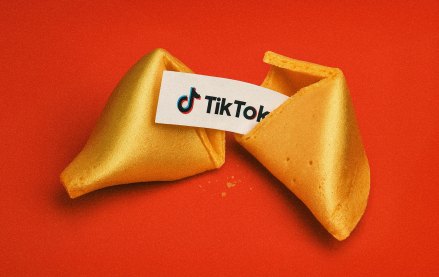Save 50% on a 3-month Digiday+ membership. Ends Dec 5.
Former Substack creators say they’re earning more on new platforms that offer larger shares of subscription revenue

As a Digiday+ member, you were able to access this article early through the Digiday+ Story Preview email. See other exclusives or manage your account.This article was provided as an exclusive preview for Digiday+ members, who were able to access it early. Check out the other features included with Digiday+ to help you stay ahead
A year after leaving Substack in early 2024, newsletter writers are making more money peddling their words on other platforms.
Across the board, writers such as Marisa Kabas, Luke O’Neil, Jonathan M. Katz and Ryan Broderick — all of whom exited Substack in early 2024 following the publication of an open letter in December 2023 decrying the presence of politically extreme voices on the platform — told Digiday that they are receiving a higher share of subscription revenue after making the switch from Substack to rival newsletter services such as Ghost and Beehiiv.
Broderick, for example, estimated that revenue for his newsletter Garbage Day had increased by roughly 20 to 25 percent year over year since he left Substack in January 2024, though he didn’t provide exact figures.
“The amount I was making at Substack was not enough to hire a full-time employee,” Broderick said. “Last month, I just hired Adam Bumas, my head of research, full time.”
Since leaving Substack, some writers’ subscriber counts have plateaued over the past year, while others have risen — but in both cases, creators said that their share of revenue has increased because Ghost and Beehiiv charge creators flat monthly rates that scale based on their subscriber counts, rather than Substack’s 10 percent cut of all transaction fees.
Both Beehiiv and Ghost offer a multitude of different pricing tiers based on both a newsletter’s size and the specific features desired by its creator. Beehiiv’s paid plans start at $49 per month for up to 1,000 subscribers and tops out at $459 per month for newsletters with up to 100,000 subscribers, while Ghost’s plans start at $9 per month for newsletters with up to 500 subscribers and go up to $2,415 per month for newsletters with up to 385,000 members. Both services also offer custom pricing rates for newsletters with more than the maximum subscriber counts listed for their paid plans.
A Substack representative declined to comment on the topic of former Substack writers making more money after moving to rival platforms that offered them a higher cut of subscription revenue.
“I was paying like $10,000 or so a year to Substack to host my blog. Even if you don’t disagree with them on politics, what are some of these bloggers 5 or 10 or 100 times bigger than me doing here, man?” said O’Neil, who said that he would still pay a lower fee to Ghost even if his newsletter had five times the subscribers under the service’s flat rate pricing model. “Paying someone $100,000 a year to host your blog. Come on buddy. I said I hate being a businessman, but even I know that’s fucking stupid.”
Kabas, who helped organize the effort to publish the open letter in 2023, said that her total subscriber and paid subscriber counts had both tripled since she left Substack in early 2024.
“I have to say that it felt really good, when I was bringing in all this new revenue, that I wasn’t having to share 10 percent of every subscription with Substack,” she said.
In the past, platforms have offered shiny financial incentives to entice creators to come on board, only to eventually pull them away — such as TikTok’s billion-dollar Creator Fund, which the platform launched in 2020 before sunsetting the fund in 2023. However, Beehiiv co-founder and CEO Tyler Denk said that the company had no plans to significantly adjust its pricing model in the future. At the moment, Substack boasts over 63,000 active newsletters, compared to over 26,000 publishers on Beehiiv, per Denk, and just over 25,000 “customers” — paying newsletter creators — on Ghost, according to the Ghost website, although a Ghost representative did not respond to a request for the specific number of writers using the service.
“We’re committed to never taking a percent of subscription revenue from our users,” Denk said.
More in Media

TikTok Shop sheds bargain-bin reputation as average prices climb across categories
An analysis by e-commerce intelligence firm Charm shows average prices climbing across more than a dozen key categories.

Ad Tech Briefing: The Programmatic Governance Council is a bid to reset power dynamics
As tensions over TID and GPID peak, Tech Lab is convening a council to hash out commercial ground rules.

Newsweek is building an AI Mode-like experience to customize homepages for readers
Newsweek is building an AI homepage modeled after Google’s AI Mode to increase engagement and offset declining search referrals.








